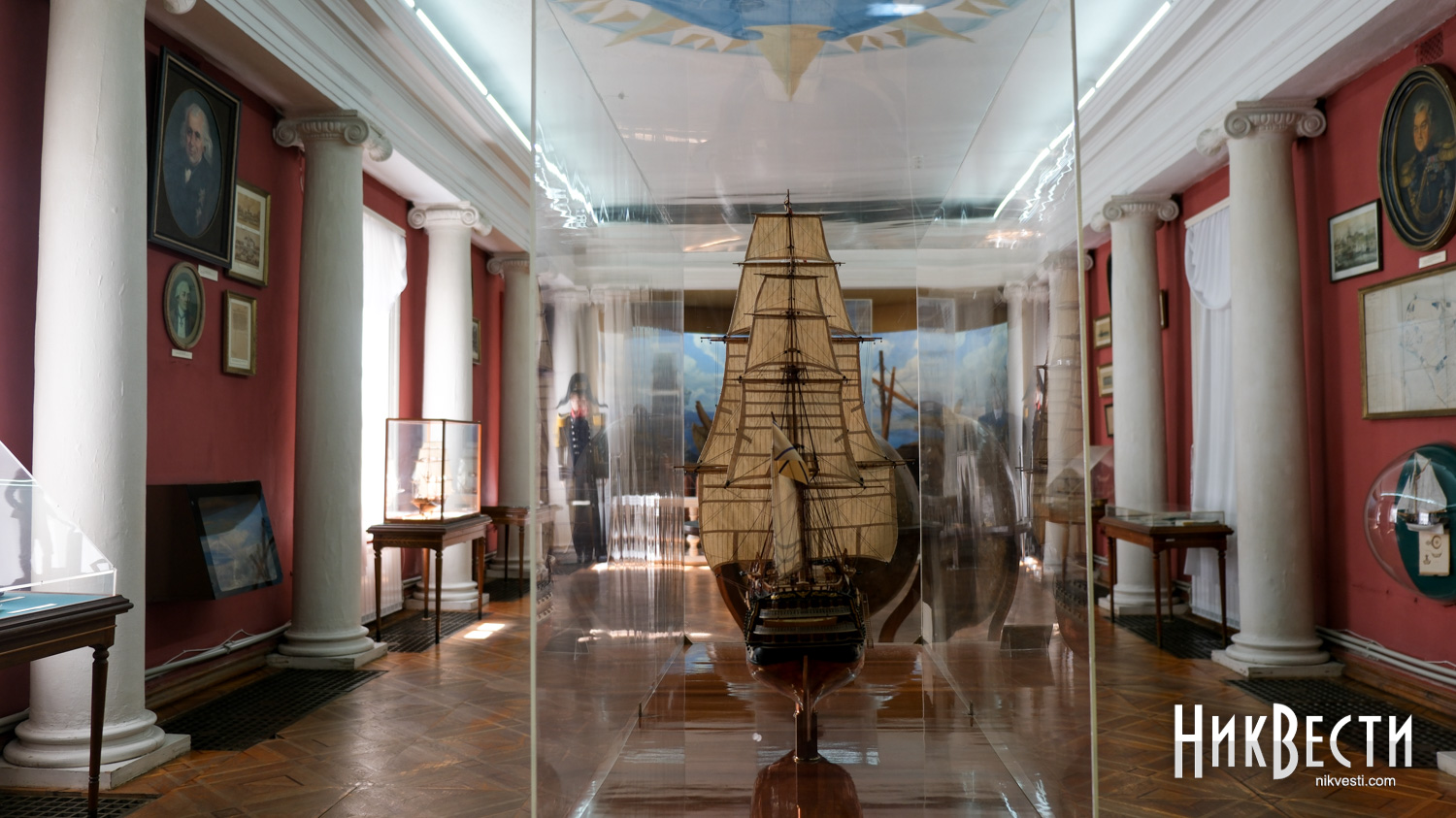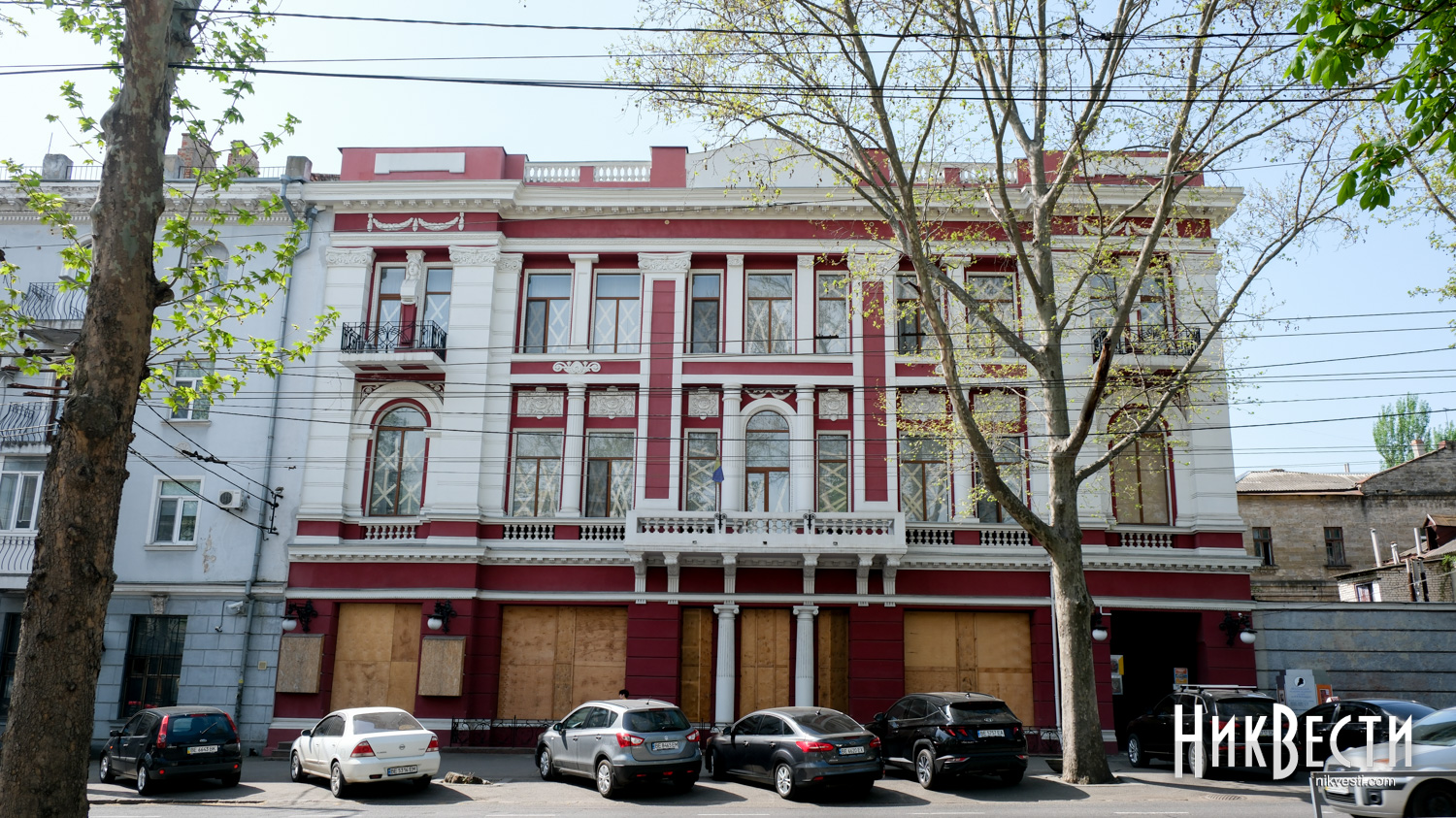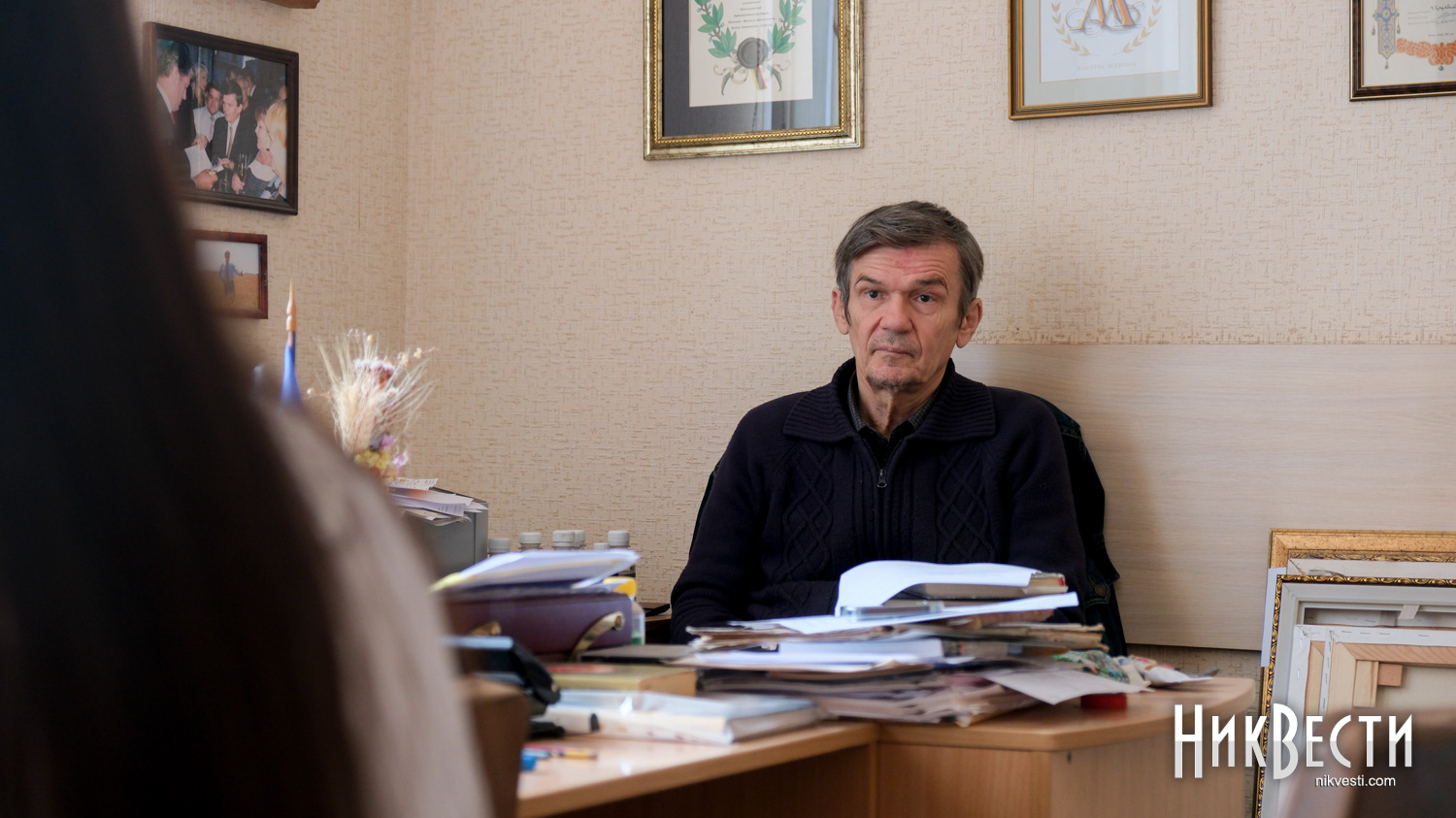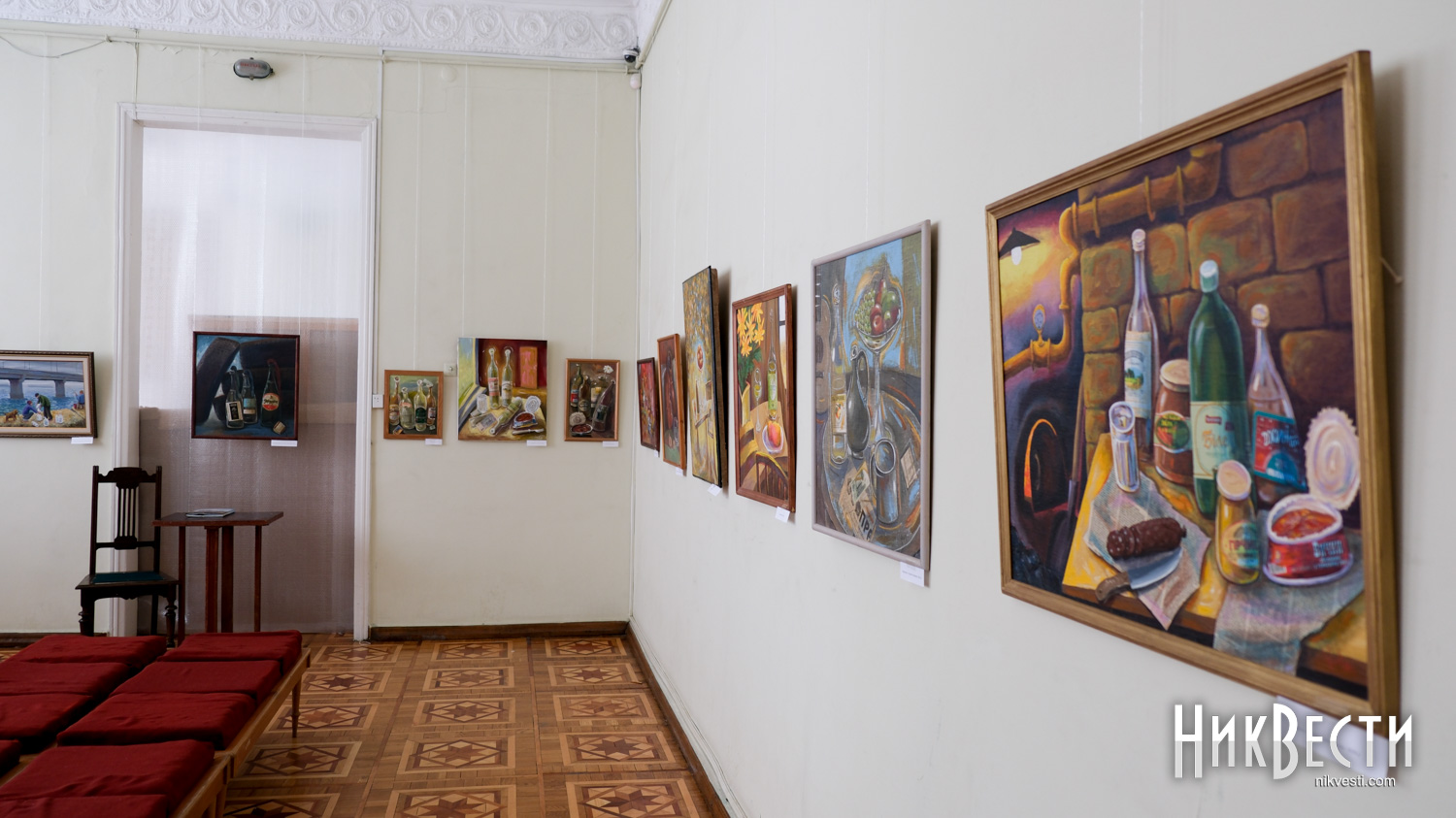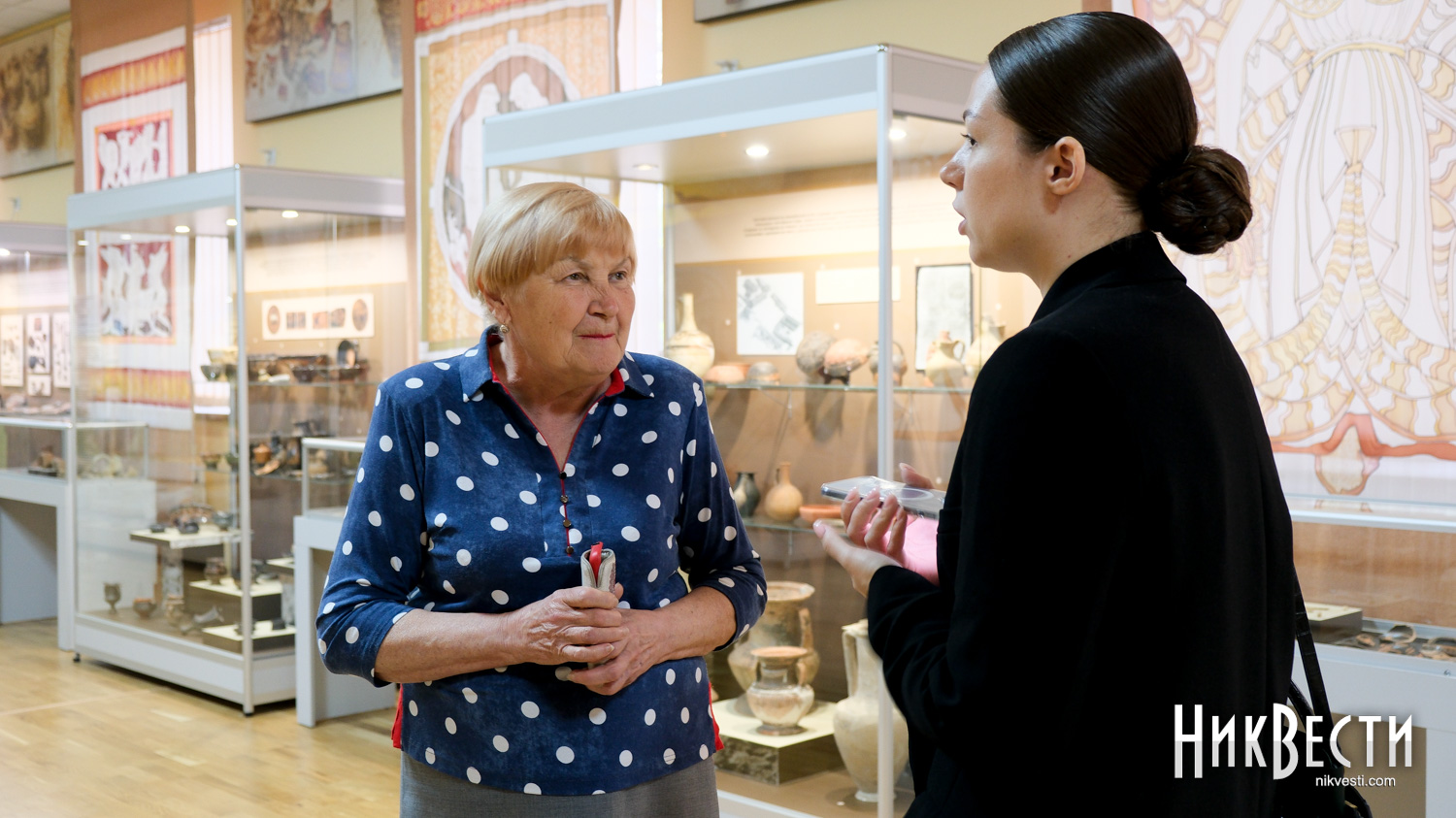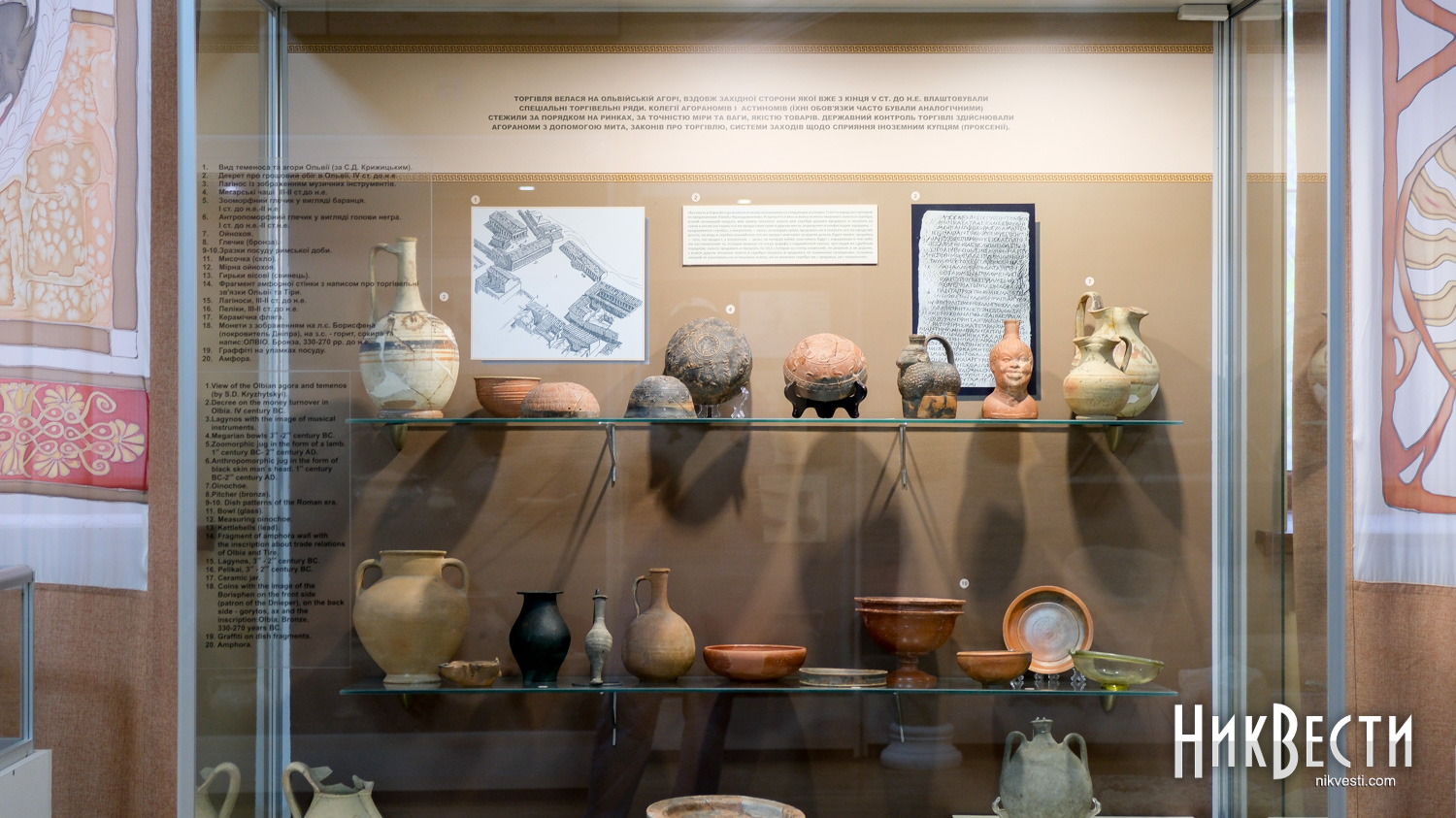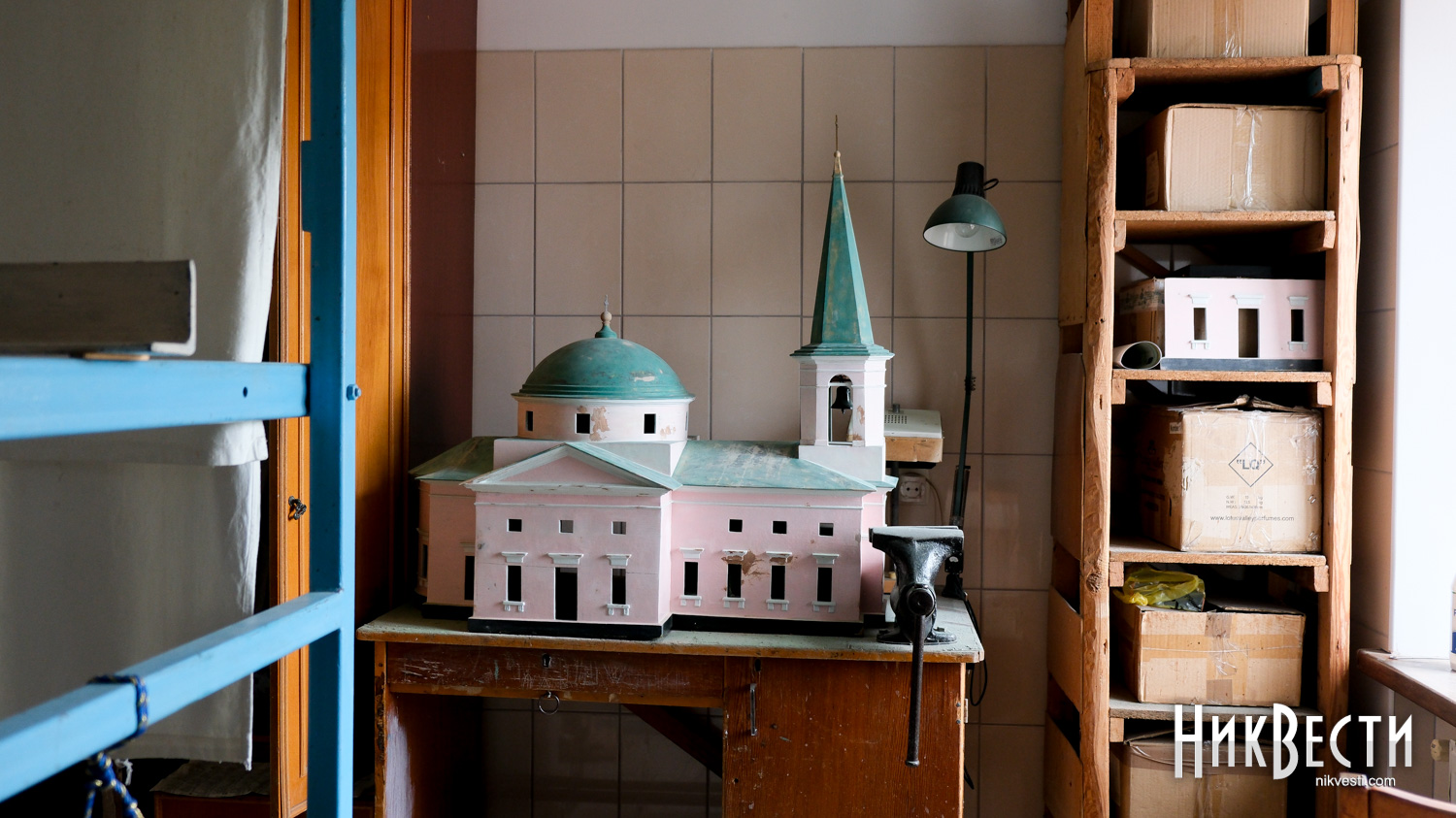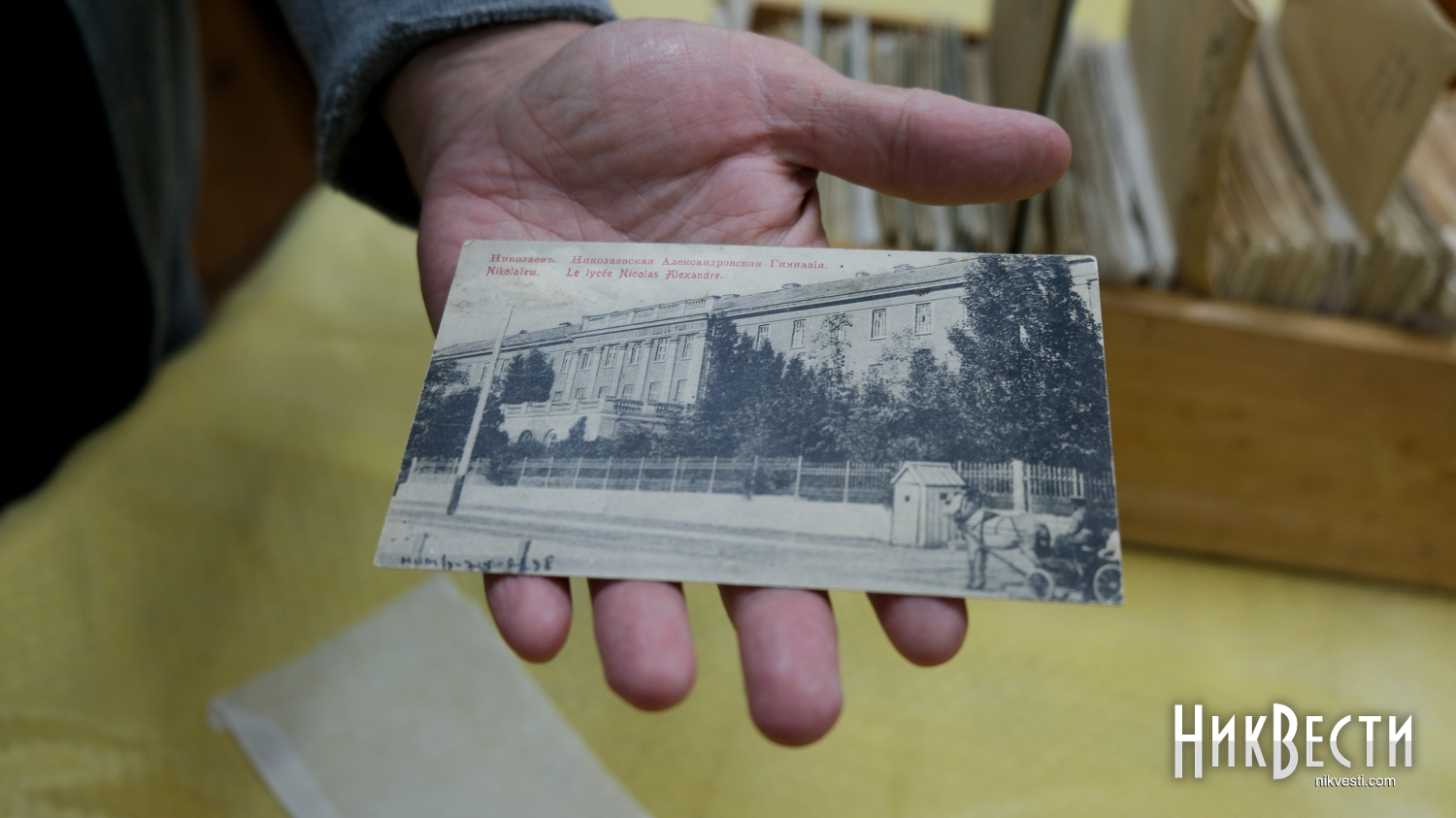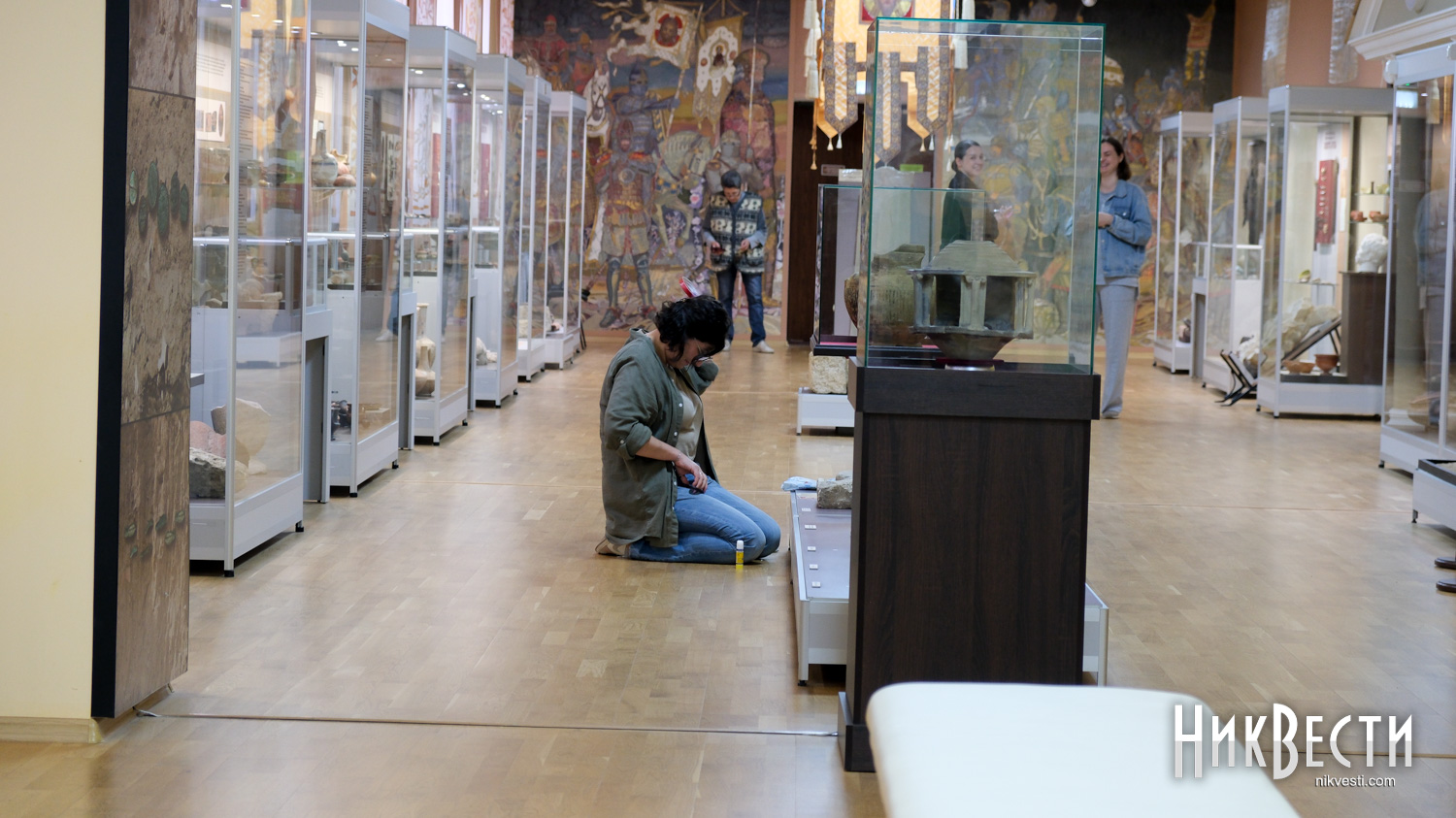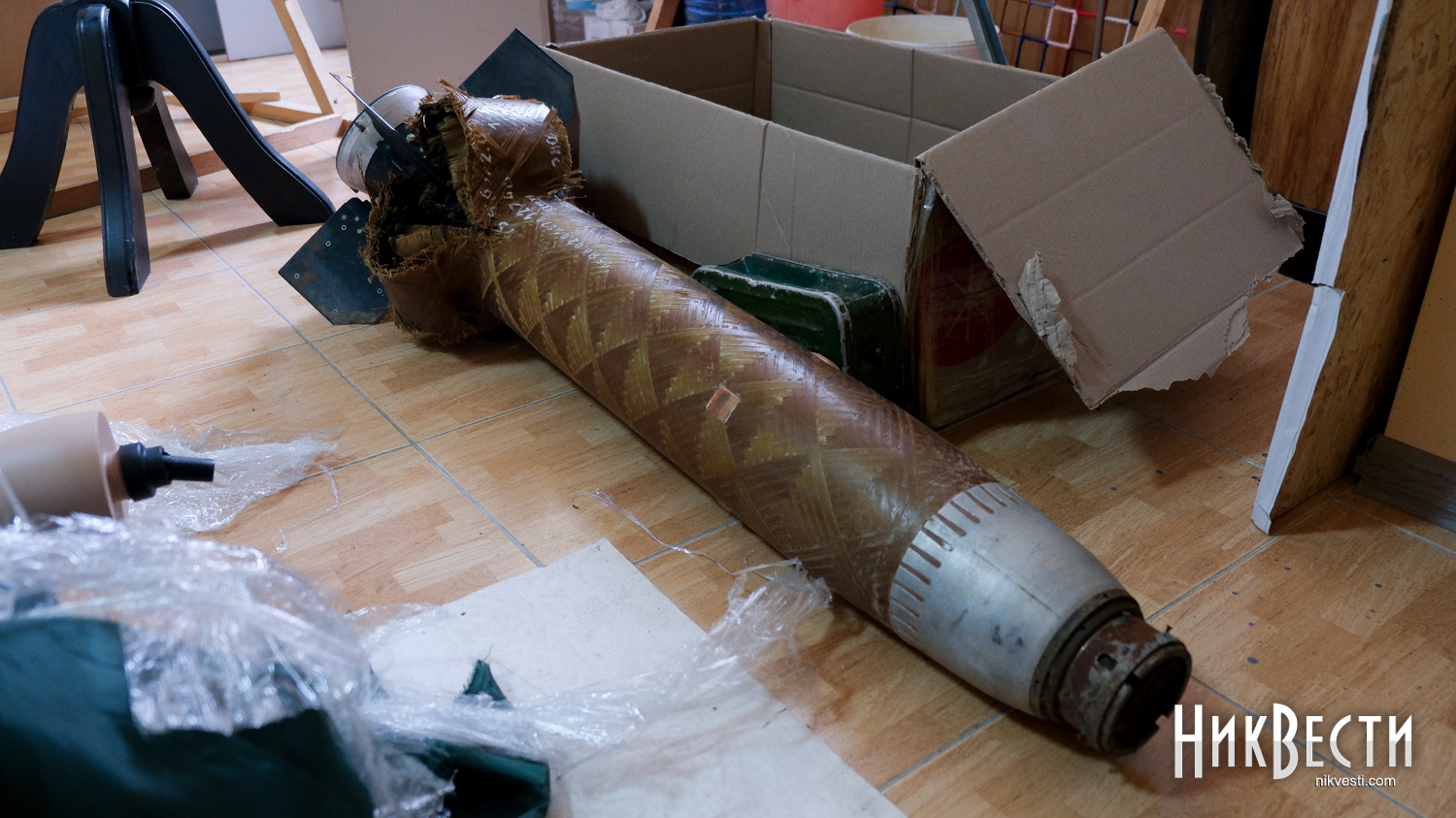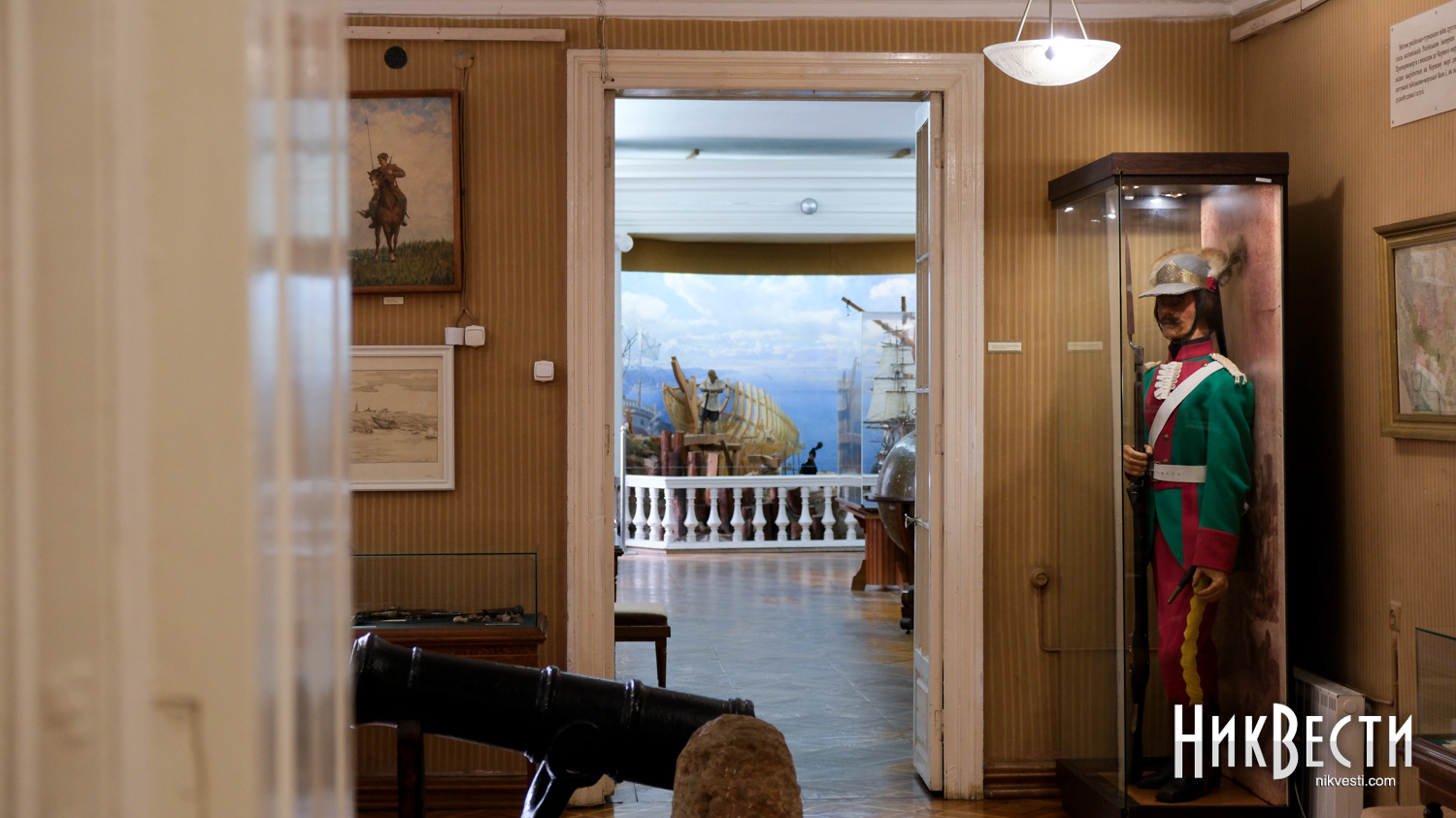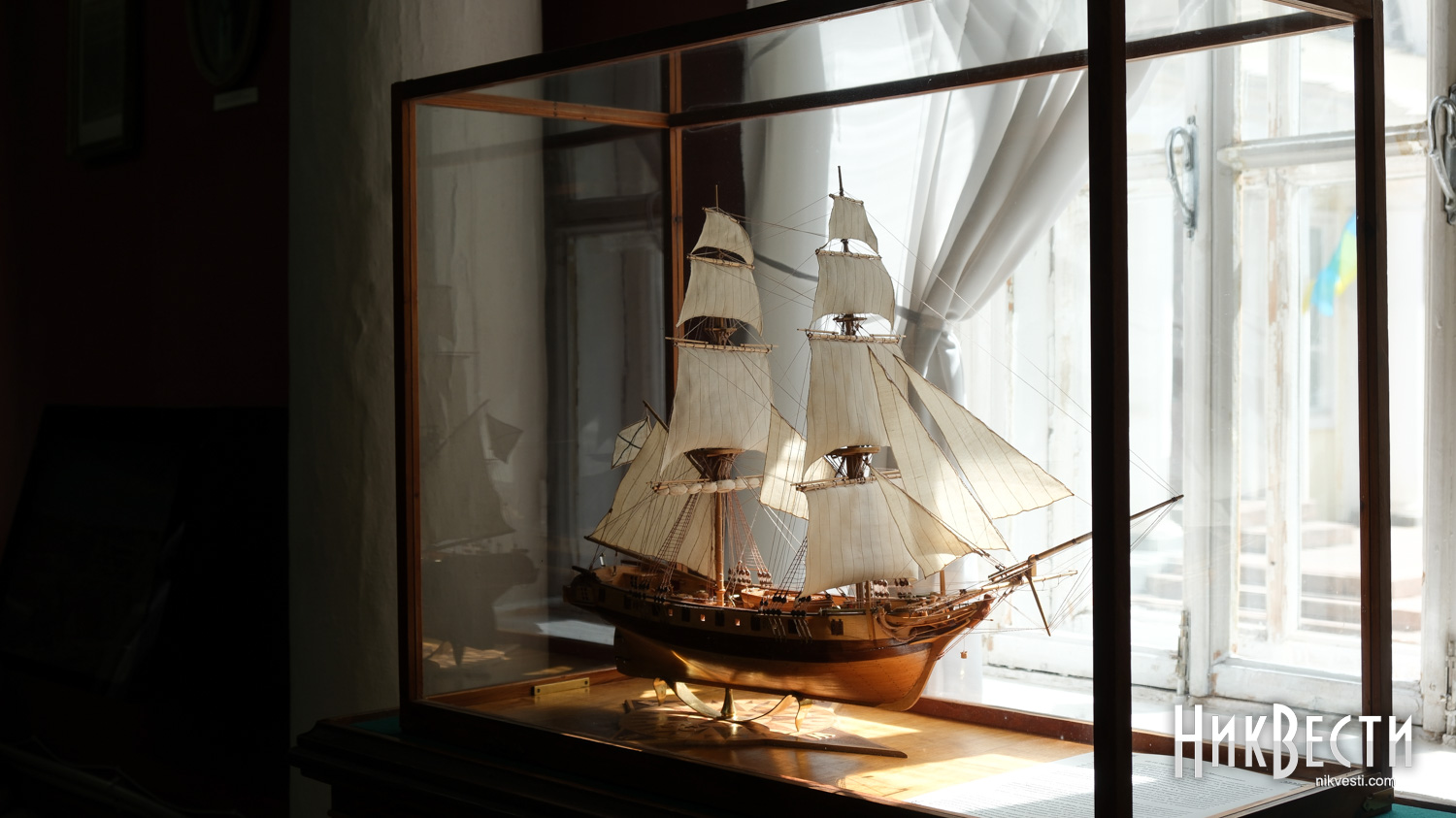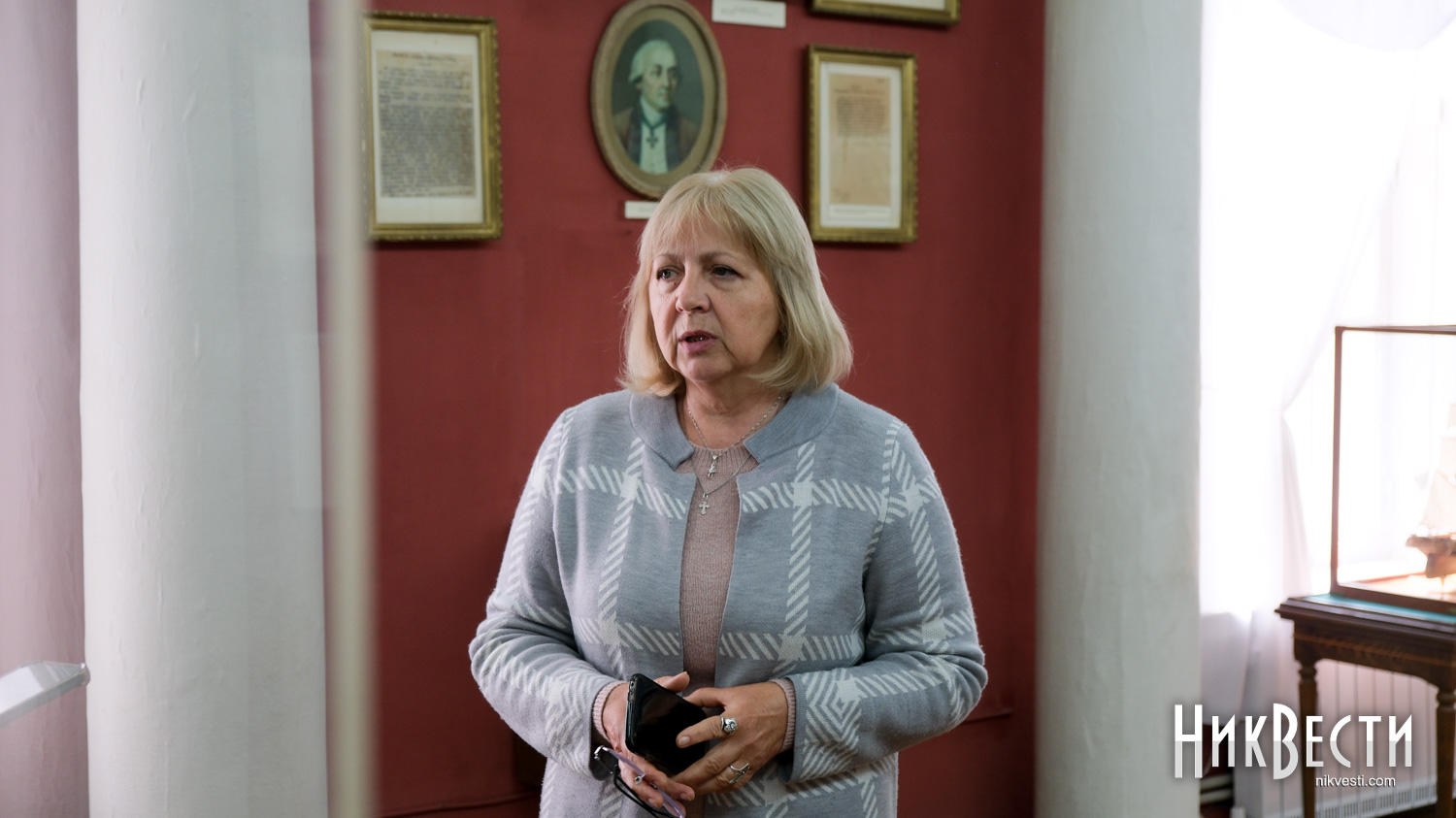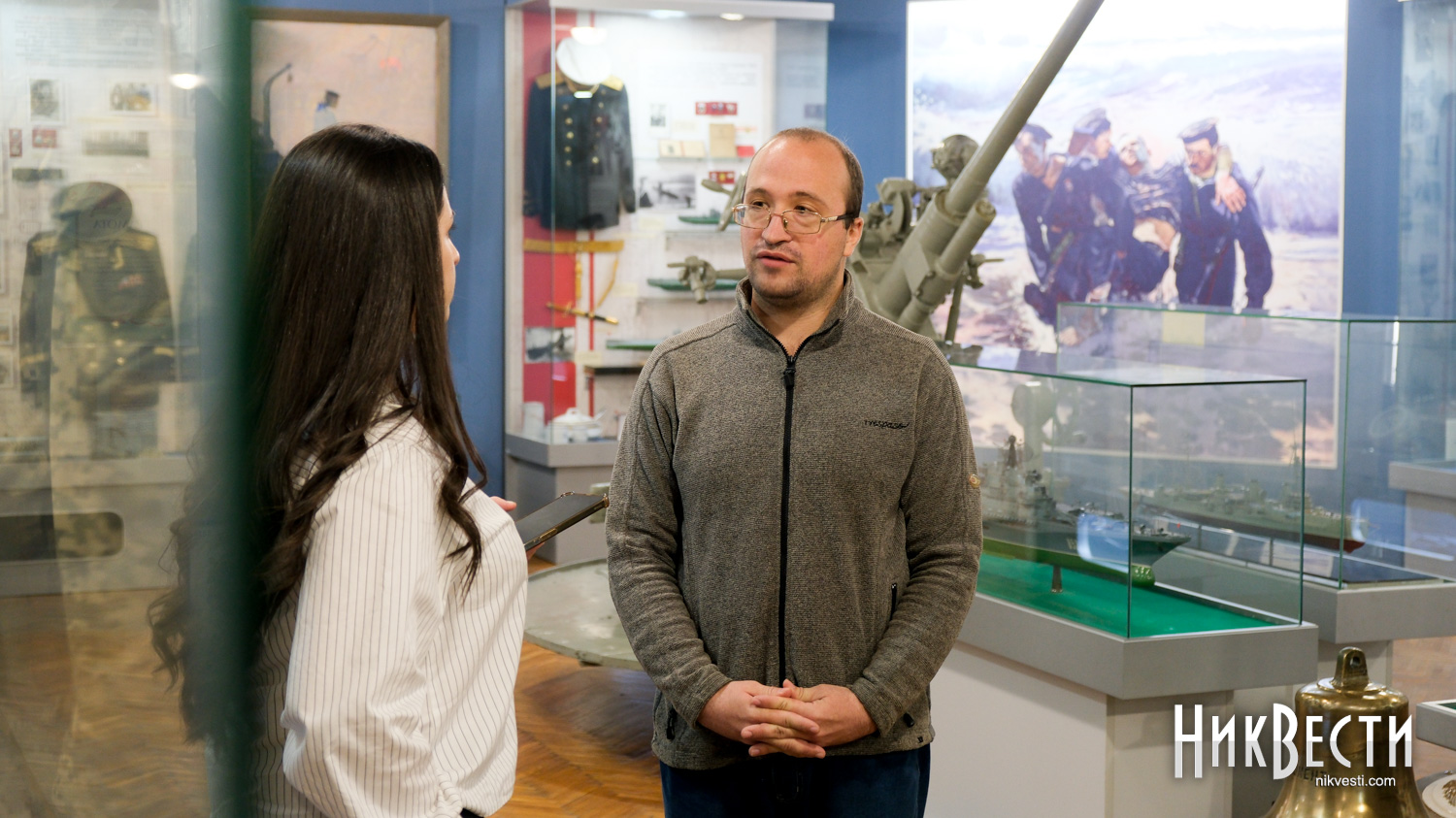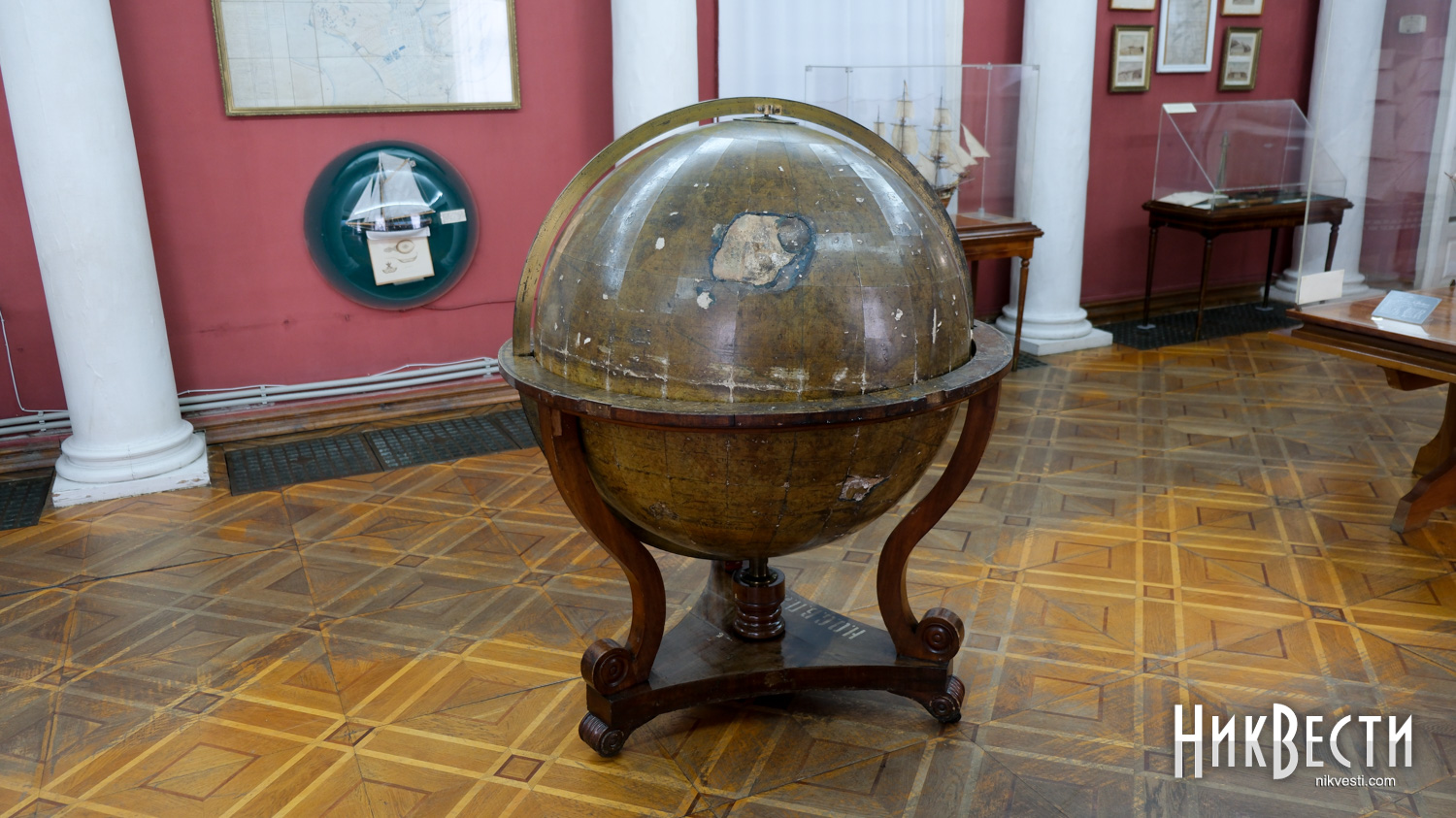Evacuation of exhibits and shelling: survival of Mykolaiv museums during the war
- News of Mykolaiv
-
•
-

- Yuliia Boichenko
-
•
-
12:00, 24 April, 2024
From the first days of the Great War, Mykolaiv museums had to save their exhibits from shelling and possible occupation of the city. Museum workers understood that the Russians would try to destroy Ukrainian identity and history. Therefore, the exhibits of the three largest museums of the city were evacuated to safe places: the artistic name of Vasyl Vereshchahin, the regional museum of local history and shipbuilding and the fleet.
For a long time, museums did not work, and their exhibition halls were empty. However, today they managed to adapt and continued their work despite the war. What museums have experienced during this time, how they try to preserve history and what their life is like today — see in the photo report of NikVesti.
Vereshchahin Museum: «We work as before, but in specific conditions»
In the first days of the war, museum exhibits were removed from all walls of the institution. The workers spent three days on this. In what quantity and where exactly the works of art are currently being hidden is secret information, says the director of the museum, Serhii Rosliakov.
Today, the halls of the museum feature exhibitions about the life of North American Indians, a collection of Ukrainian icons, and the history of Easter.
«For two years, we have been working with exhibits not belonging to our museum. We work with collectors' items. Except for huge canvases that cannot be hidden anywhere. For example, The Forgotten Soldier. She is huge. 15 square meters,» says Serhii Rosliakov.
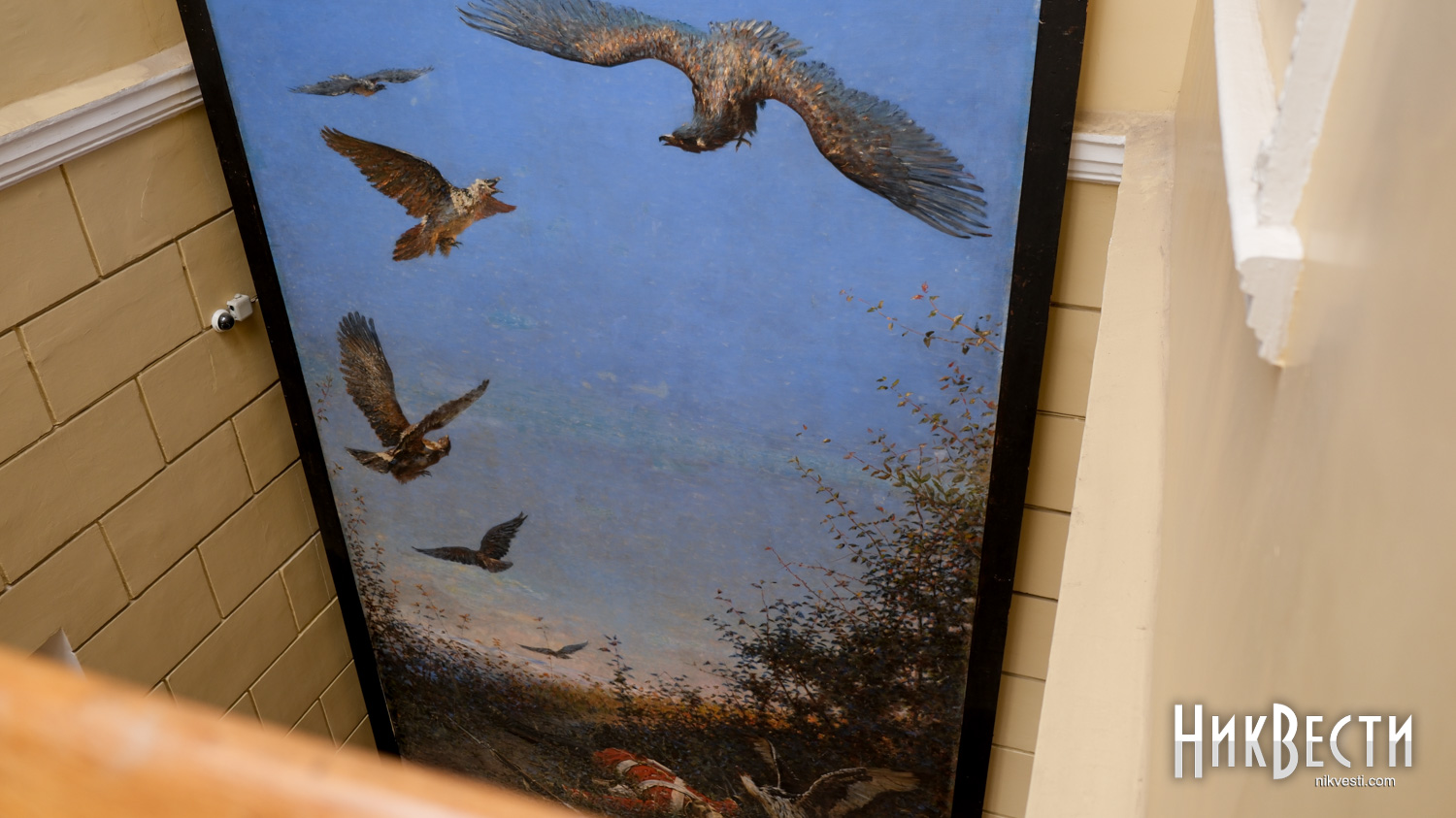 One of the largest paintings in the «Forgotten Soldier» exhibition, which the museum did not evacuate, photo: NikVesti
One of the largest paintings in the «Forgotten Soldier» exhibition, which the museum did not evacuate, photo: NikVestiThe management of the museum says that the owners of the collections know that they are taking a risk, because the war is going on. However, there is no other way out of the situation - the exhibits will not be returned to the museum until the end of hostilities. Because of this, some halls are still empty and closed to visitors.
But getting to know the museum's collection became possible thanks to digitization, which the museum joined before the full-scale invasion began.
 Empty halls of the museum, from which the exhibits were removed due to the threat of Russian attacks, photo: NikVesti
Empty halls of the museum, from which the exhibits were removed due to the threat of Russian attacks, photo: NikVestiDigitization, says Serhii Rosliakov, is research work during which pages of history that could have been missed before are opened.
«The Mykolaiv Development Agency is helping us. Without them, we would not have coped with this problem. We have already digitized a lot. There is decorative art, painting, and graphics. We haven't reached the sculpture yet. They have technology, equipment. Books and museum catalogs have already been published with their help. The last recently published painting collection is a part that deals with the painting of sea landscapes, marine painting. That is, the museum lives almost the same life as before the war, the only problem is that we do not display our own exhibits,» says the director of the institution.
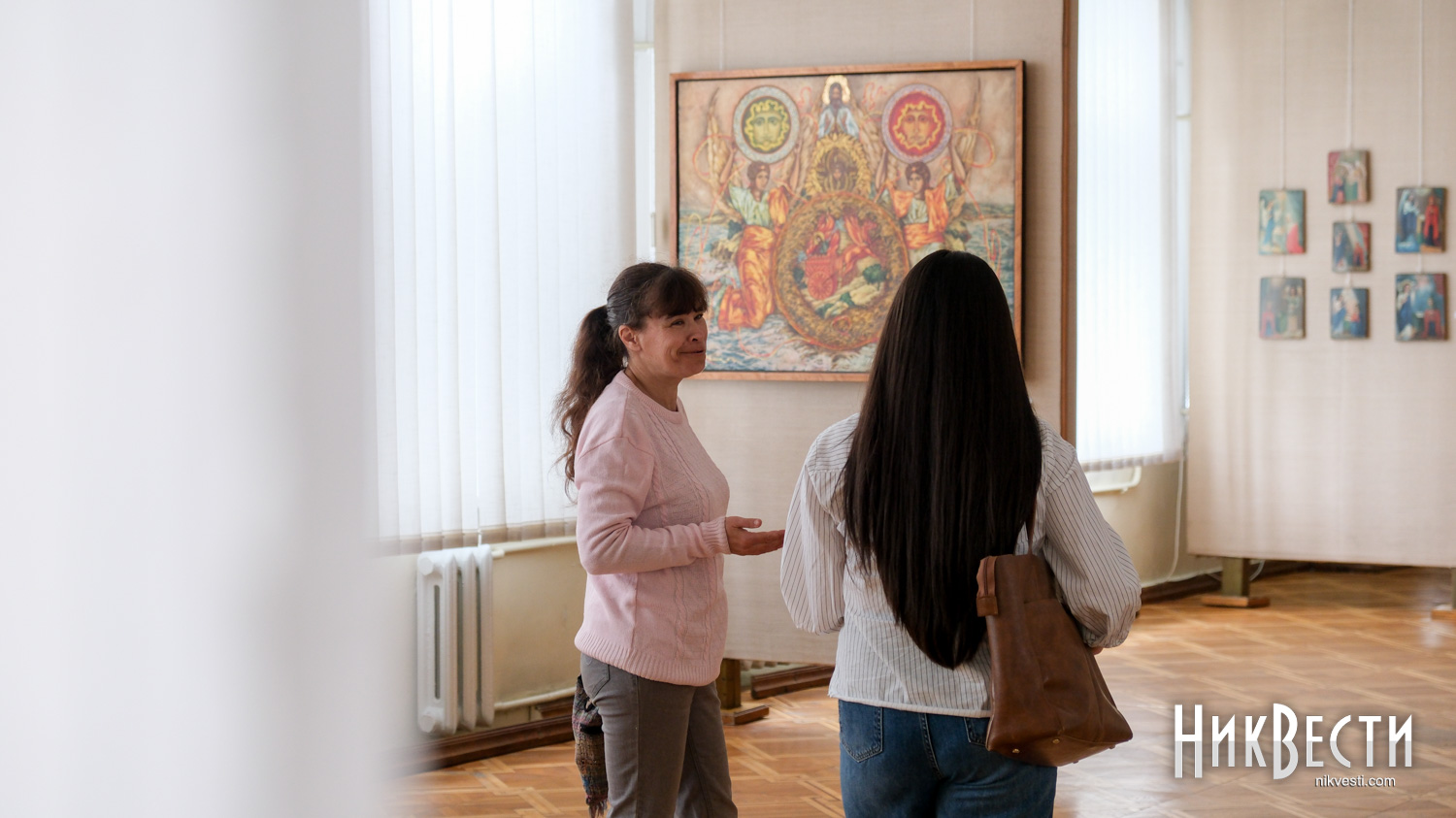 An employee of the museum said that in place of the paintings there are now exhibits of Mykolaiv collectors, photo: NikVesti
An employee of the museum said that in place of the paintings there are now exhibits of Mykolaiv collectors, photo: NikVestiToday, the cultural institution is supported by the regional military administration and the city council, which even at the beginning of the war provided the museum with materials to protect the building from the effects of air raids and blast waves.
«Formally, the building was not damaged. We only had one glass fall out there, but we installed it. There was more damage in the yard when the explosion occurred not far from us. Frankly speaking, putting a hand on the heart, the museum works the way it used to work, but under specific conditions. Now we develop, research, tell stories,» adds the manager.
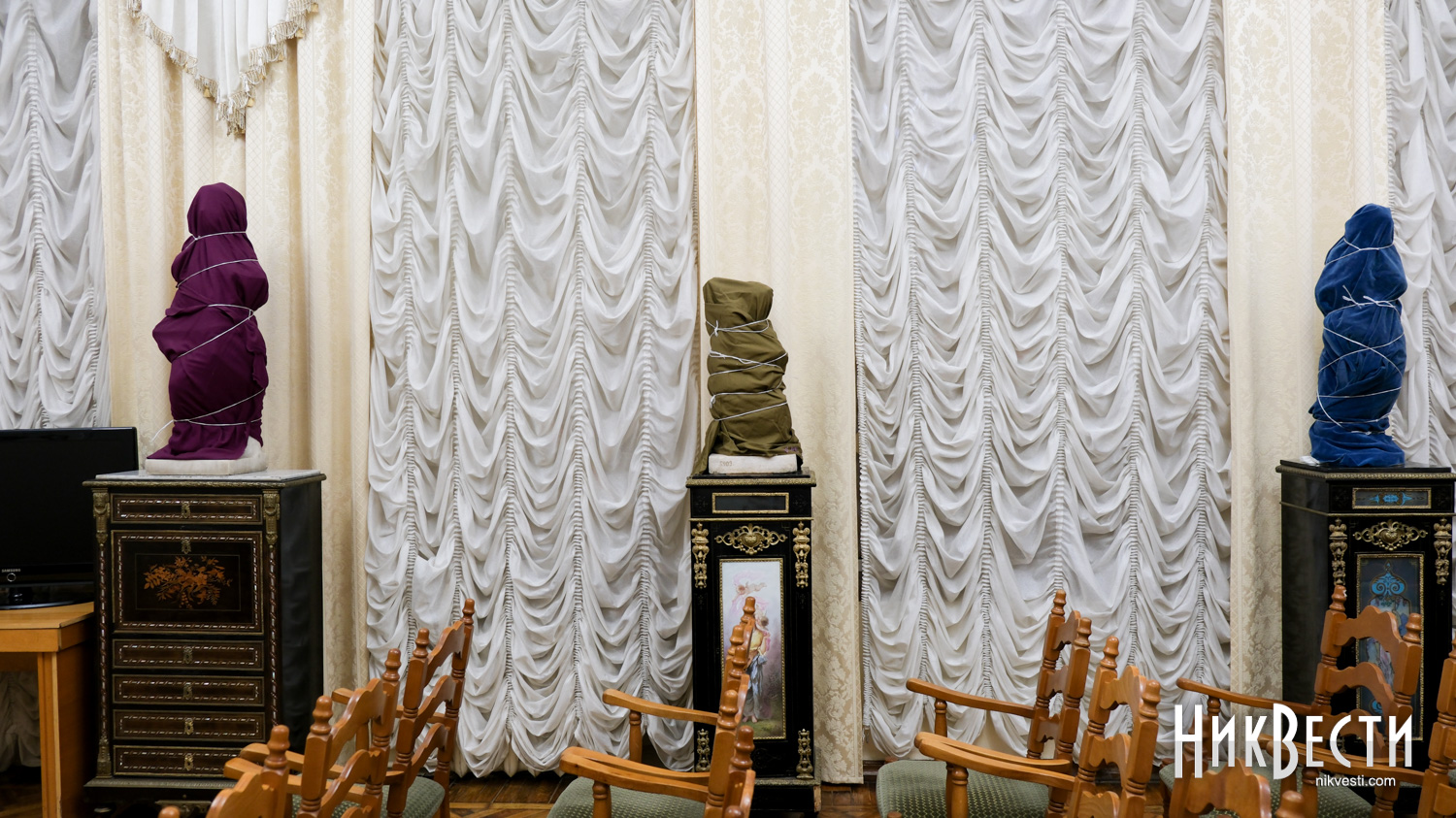 In the museum's hall for traditional events, the exhibits are also protected from possible arrivals, photo: NikVesti
In the museum's hall for traditional events, the exhibits are also protected from possible arrivals, photo: NikVesti«Here is a whole life». The Museum of Local History survived five shellings during the war
During the Great War, the Mykolaiv Regional Museum of Local Lore survived five shellings. The northern part of the building suffered the most: the windows were broken, the suspended ceilings fell, says the director of the museum, Elvira Elizarova. «But I didn't leave the museum for a day,» she added.
Every morning after the shelling, his employees came to the museum and cleaned up the consequences of the destruction themselves and «stitched up» the windows with OSB boards with a film. We had to work until late in the evening, because about 90 windows were broken every time after the arrivals.
The exhibits were not evacuated from the museum immediately, says Elvira Elizarova. «Initially, there should have been an order from the ministry to start the evacuation. We couldn't do it on our own,» she recalls. And when they received permission to remove the exhibits, the employees could not contain their emotions, the woman recalls.
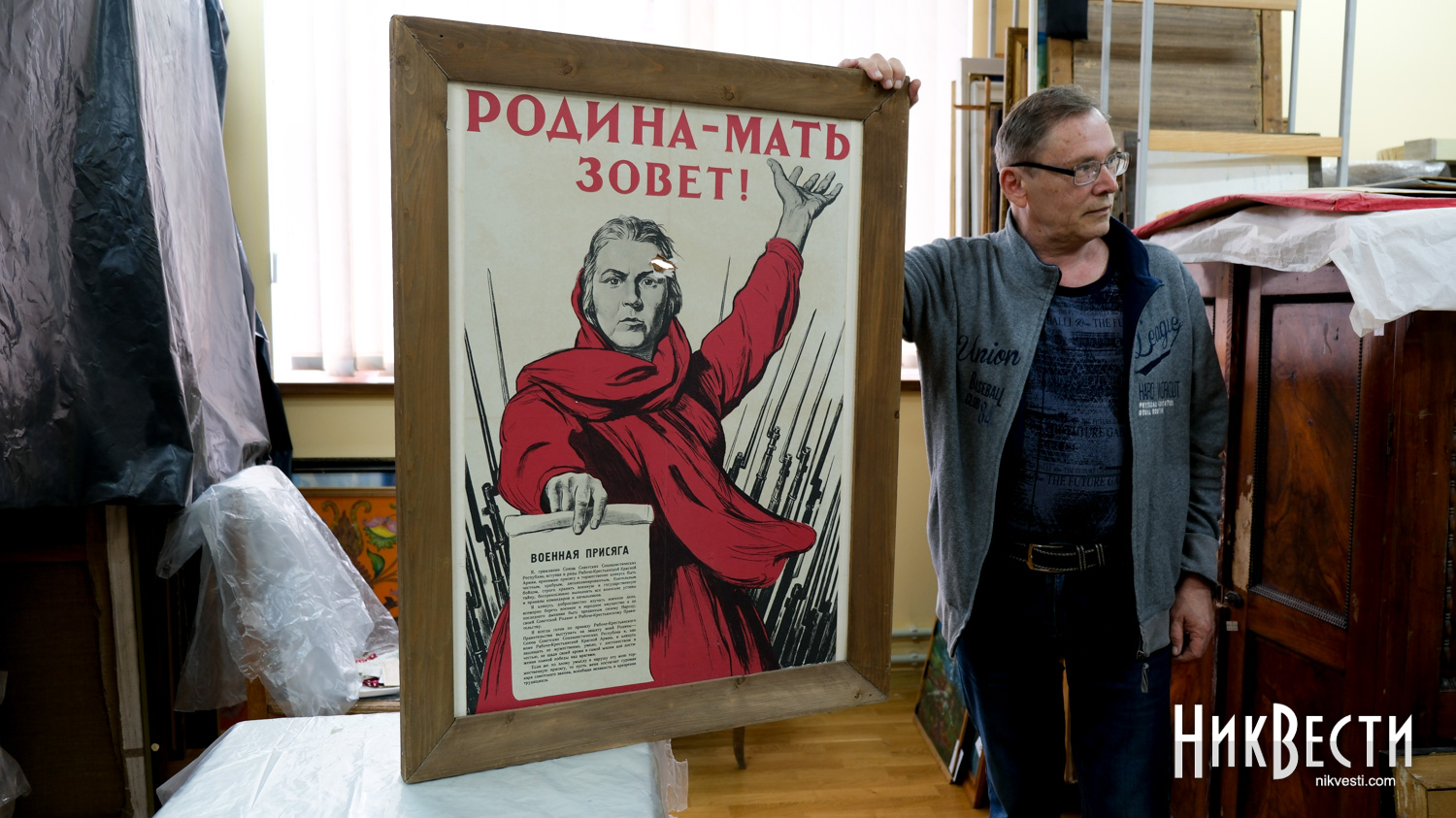 A copy of the Mykolaiv Regional Local History Museum's copy of the «Motherland Calls» poster damaged by a rocket fragment, photo NikVesti
A copy of the Mykolaiv Regional Local History Museum's copy of the «Motherland Calls» poster damaged by a rocket fragment, photo NikVesti«We signed all exhibits, put them in boxes and sealed them. In how many years no one has ever evacuated them. The employees were just sobbing because what they did with love and desire was being destroyed,» she said.
Despite this, not so many exhibits were damaged by the shelling, says Nataliia Sofiienko, head of the museum's exposition department.
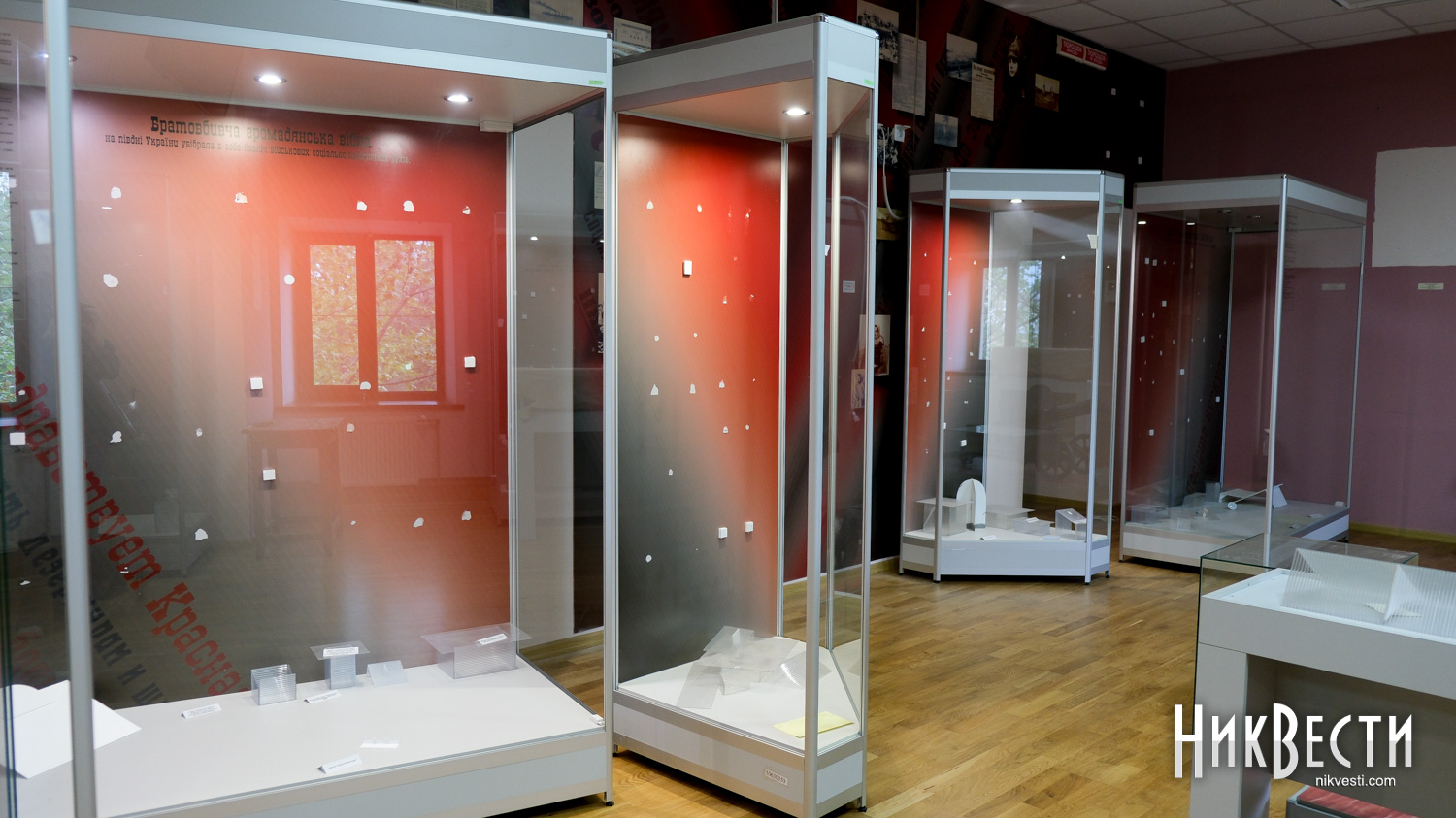 Showcases where the exhibits of the Mykolaiv Regional Museum of Local History used to be located, photo NikVesti
Showcases where the exhibits of the Mykolaiv Regional Museum of Local History used to be located, photo NikVesti«After the first shelling, our building was not so badly damaged, and we have already started removing and packing the exhibits. But for the first time, glass flew out of our windows. Then we realized that the biggest problem is the glass, which flies and cuts everything in its path. Therefore, we had time to remove all the exhibits before the shelling, which was the largest for us,» she says.
However, many exhibits were covered with cracks from the blast wave — «even those that were packed,» says Nataliia Sofiienko. The Admiralty Cathedral suffered the most — it fell from the blast wave and now needs restoration, explained Svitlana Romanenko, head of the exhibitions department.
«It was a pain for me personally. I understand how it was for those people who created this exhibition for 12 years: they thought about where to put each object, how to describe it. This is a whole life. In general, I believe that the museum is staffed by enthusiastic people who simply live by it. For them, it's life, love and history,» says Natalia Sofiienko.
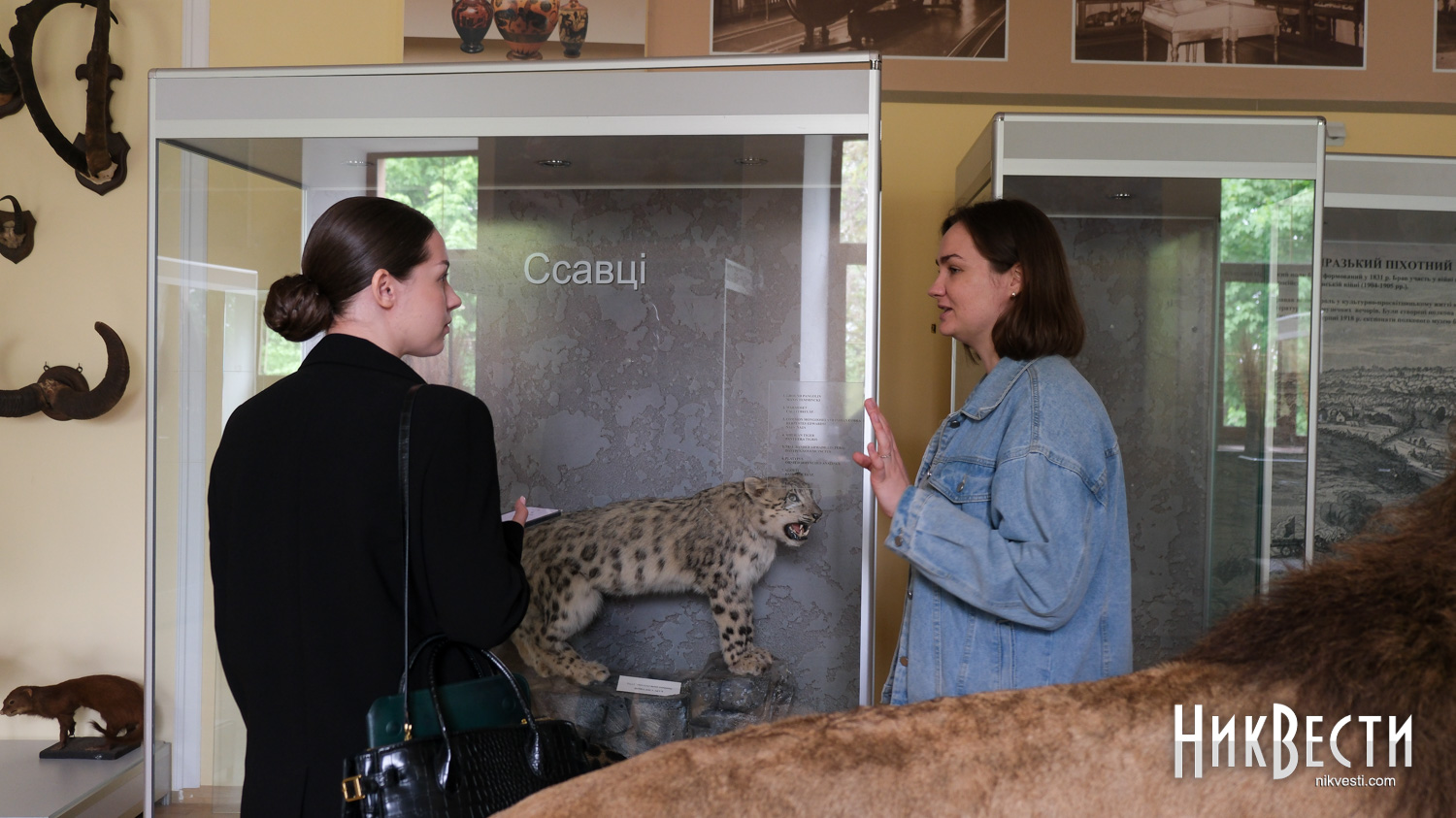 Nataliia Sofiienko, head of the exposition department of the Mykolaiv Regional Museum of Local History, photo NikVesti
Nataliia Sofiienko, head of the exposition department of the Mykolaiv Regional Museum of Local History, photo NikVestiToday, the museum does not have a complete collection of exhibits: they were evacuated or hidden. Museum workers are concerned about the preservation of historical and cultural heritage. The digitization process helps the museum in this. To date, it has been possible to digitize more than 2,000 archival photos depicting streets, families and plots of historical events in the region.
At the same time, work continues on the restoration of two museum exhibits: natural and ethnographic. The first should be completed already in April, and the second — at the end of May. Repairs are being made there, windows, glass window caps to protect exhibits and information stands are being installed. These works are supported by the European Union within the framework of the House of Europe program.
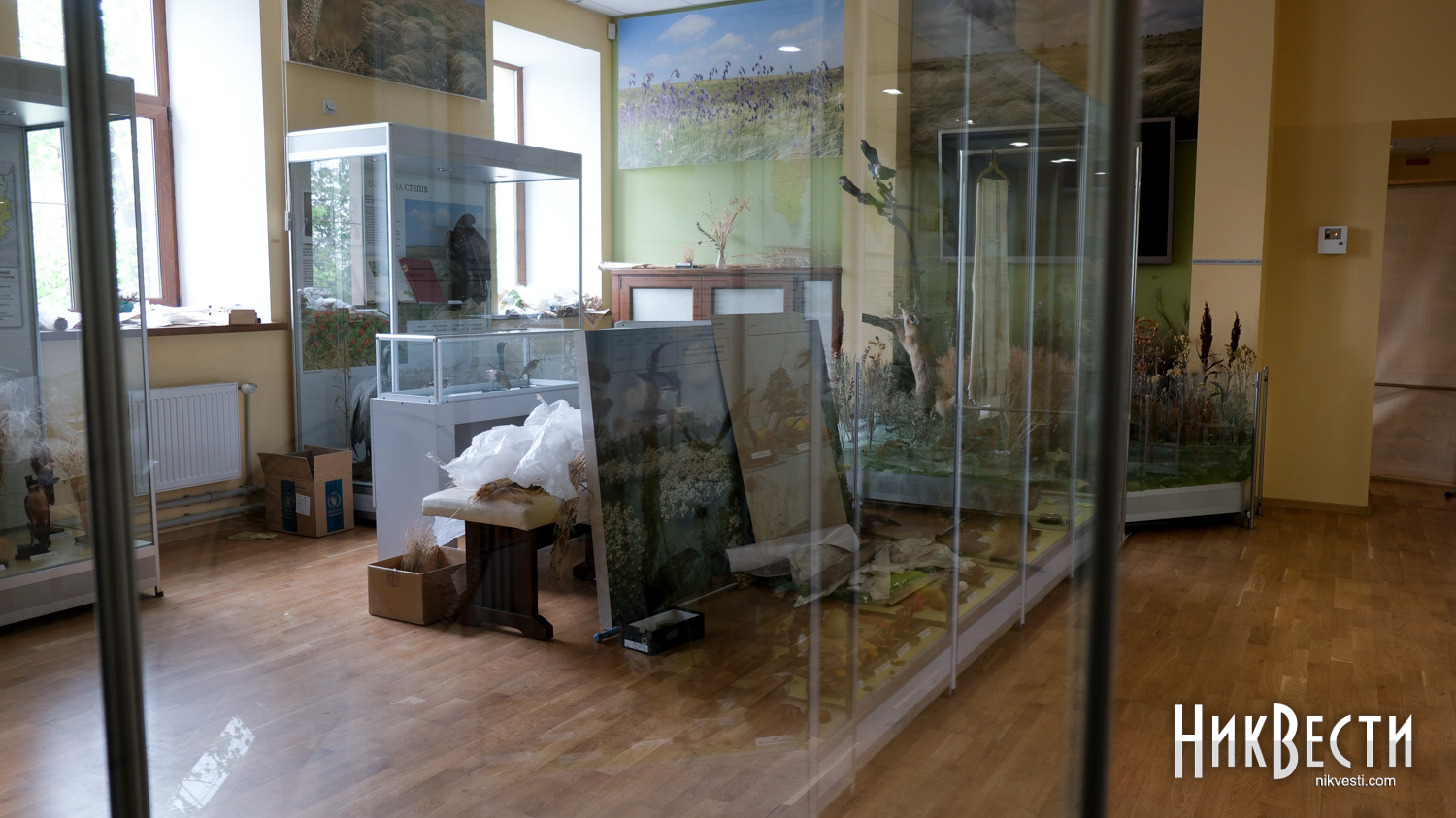 The natural exposition of the Mykolaiv Regional Museum of Local History in the process of repair, photo NikVesti
The natural exposition of the Mykolaiv Regional Museum of Local History in the process of repair, photo NikVesti Ethnographic exposition of the Mykolaiv Regional Museum of Local History under renovation, photo NikVesti
Ethnographic exposition of the Mykolaiv Regional Museum of Local History under renovation, photo NikVestiCurrently, the museum is open to visitors and even conducts tours, says Nataliia Sofiienko. The museum was closed for the whole of 2022 and opened its doors only from March 2023. Before that, 90 windows, 20 doors and 150 lamps were installed in the museum with funds from the regional budget. And the roof of the museum was restored with her own savings, says the director.
Museum workers are already collecting exhibits from the time of the full-scale invasion. The military, who replenish the museum's collection, help in this. They were even given the wreckage of the first Shaheds who arrived in Mykolaiv. «Our goal now is to preserve all this,» says Nataliia Sofiienko.
Shipbuilding and Navy Museum: «The Russian general flew into his heart»
Another consequence of the arrival in Mykolaiv did not escape the Shipbuilding and Fleet Museum. One of the busts of naval commanders near the facility, Adjutant General Hryhorii Butakov, was damaged by an attack on nearby facilities.
«Butakov was hit right in the heart, he still has a dent there,» says the director of the institution, Tetyana Mitkovska.
During the entire time from the beginning of the war until the restoration of the museum, the roof and some halls of the institution were partially damaged, but the exhibits were not affected — they were also evacuated.
«I live not far away, so I could come to the museum almost at any time. And here we hid everything together with the team in the basement. Later, the Department of Culture began to evacuate, and part of our funds is currently being evacuated. The documentation is also there until the end of martial law,» says Tetiana Mitkovska.
The restoration of the museum became possible in February 2023. Expositions were restored in two weeks.
«Back in January, there was nothing on the walls in the halls, and already in March, people came to us. We restored the exposition without changing anything. But our excursion was changed ideologically, we removed some exhibits, changed the leading texts. And these are not our words, but the words of diplomats of the 18th and 19th centuries about the Cossacks, about Ukraine. We have included Beauplan's description of Ukraine, published by a French historian who lived and explored these territories in the 17th century. The book was published in 1650. Description of Ukraine. That is, it was not Lenin who created Ukraine,» adds the director ironically.
The museum also began digitizing exhibits together with the Mykolaiv Development Agency. At the first stage, 30 works on marine topics were accepted. Now the institution plans to attach photo materials from the beginning of the city's founding and is preparing a list of archival works.
Now the museum employees are working on collecting valuable historical exhibits of the modern Russian-Ukrainian war.
«We have two showcases installed: one is dedicated to the marines, and the second is about the defense of Mykolaiv. Exhibits were handed over to us from the 123rd TRD. They bring anything. It can be the weapons with which we are fired at, and the fragments of rockets that provide them for us, but we are not exposing everything now. There are also uniforms of both Ukrainian and Russian soldiers, chevrons. We personally appeal to the military, but because of the war, there are difficulties in establishing connections,» says Viktor Zadyraka, a researcher of the exposition department.
The director says that after the resumption of activities, the desire to work cannot be stopped. Now, despite the limited working conditions, the institution is trying to do everything to convey the history of the region to the residents themselves, immigrants from the affected regions and guests.
The material was worked on by Alisa Melik-Adamian and Yuliia Boichenko, NikVesti

We created this material as a member of the Recovery Window Network. Learn everything about the recovery of the affected regions of Ukraine on the single recovery.win platform.


